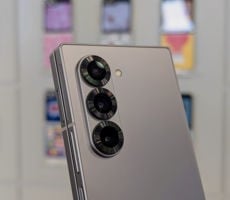Google Pixel 9 Series Review: Battery Life, Charging And Our Review Conclusion
Google Pixel 9 Series Battery Life And Charging
All three models will last through a single day without issue, even if you really hammer them. You should have plenty left in the tank at bedtime, but it would be difficult to make it through a second day with the Pixel 9 or Pixel 9 Pro. You might be able to get there with the Pixel 9 Pro XL if you're careful.In our battery life rundown test, the Pixels come out in the same range as other Pixel devices and flagship phones from Samsung. The Pixel 9 Pro XL does the best thanks to its substantially larger battery—it beats the 8 Pro by a considerable margin. Google has improved charging modestly this year. The Pixel 9 Pro XL can hit 37W with a compatible wired charger, which is within spitting distance of the S24 Ultra. The other two models top out at 27W, which is a bit on the slow side. The OnePlus 12 still leaves all these phones in the dust, though.
Google Pixel 9 Series Review Conclusion: A Clear Winner
Google got a lot right with its new Pixel 9 lineup. It stepped up the build quality and design, now easily matching what we see from Samsung. The new design, while simple, is unerringly elegant and cohesive. These phones have the same fundamental flat glass slab design as the iPhone 15, Galaxy S24, and countless other phones, but they look distinctive and "Pixel-y" at a glance. The camera bar is a bit chunky, but it's centered and stable when you set your phone down. We also appreciate how well the Pixels fit in cases, which most people use on their phones.Pixel 9 camera performance is also unimpeachable—the primary 50MP shooter is almost flawless in all lighting conditions, and the ultrawide and telephoto lenses aren't far behind. Across all of them, Google's HDR+ processing pipeline spits out sharp, vibrant images that almost always beat what you'd get from Samsung or Apple. The extras like Add Me and Night Sight are just gravy.
Tensor G4 performance may be a sticking point for some buyers, but we're not too concerned after putting the phones through their paces. Gaming performance is middling, but CPU-bound tests show Tensor G4 holding its own, and we appreciate the inclusion of a new modem. Tensor also plays a role in Google's AI blitz, which is only marginally successful. The Screenshots app is handy, and Call Notes has potential, but most of Google's Gemini features feel half-baked currently. Even Gemini Advanced regularly misleads, which makes it a frustrating digital assistant.
Google is asking more for these phones than last year's, but even with the $100 price hike, the Pixel 9 Series remains a good value. It's objectively spendy, but Google promises to support this phone for at least seven years with OS and security updates. Plenty of OEMs charge more for phones that aren't as capable and won't be updated as long. The other models get the same lengthy support, and despite the occasional bugs, Google's take on Android is great. It's fast, smooth, and attractive with Material You theming.
The Pixel 9 Pro XL is the more expensive of the phones at $1,100, which is a bit harder to justify now that the Pixel 9 Pro exists, unless you need/want its larger, beautiful display and slightly better battery life. Regardless, Google was overdue to release a smaller premium phone, and it was worth the wait. This phone is as powerful as the XL, but it's cheaper and much more comfortable to hold. Since these phones are now totally flat, you don't have the curved glass to make the largest of the series easier to hold. In our opinion, for $1,000, the Pixel 9 Pro is the one to get, unless you want a larger screen at all costs.
Either way you slice it, however, you really can't go wrong with Google's new Pixel 9 Series.






